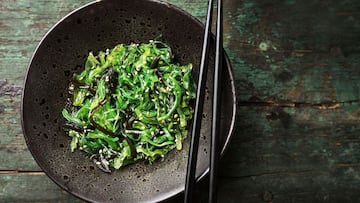The superfood good for metabolism and colds
Kelp seaweed is a staple in many Asian cuisines, a natural source of essential vitamins, minerals and antioxidants.

Kelp is a type of large, brown seaweed that grows in shallow salty water. It is very rich in nutrients and is one of the best natural sources of iodine, an essential component in the production of thyroid hormone.
Considered a superfood, kelp seaweed raises energy levels and boosts brain function. Among its nutritional value, it also is chalked full of vitamin K and calcium, both of which play a crucial role in bone health.
The folate it contains is essential for cell division, and due to its high fiber content, it stops constipation and reduces flatulence. The superfood can also help to regulate cholesterol levels and maintains constant blood pressure, making it a heart-healthy food.
Kelp acts as an anticoagulant since it cleanses and purifies the arteries. Being beneficial for circulation, it provides energy and reduces stress and fatigue.

Seaweed can help with skin health
Kelp seaweed is high in antioxidants, including carotenoids and flavonoids, which help fight free radicals that cause various diseases.
It keeps the skin healthy and hydrated thanks to its high water content, which favors the elasticity of bones and muscles. As it has a high level of antioxidants, it prevents the appearance of wrinkles and blemishes on the skin, promoting the elimination of toxins and having a diuretic effect, making it an ideal food in diets.
Kelp seaweed contains a natural fiber called alginate, and according to a study published in the journal Food Chemistry, it could help block lipase, an enzyme that digests fat up to 72%.
Related stories
The minerals stocked within the food can fight anemia and osteoporosis, with the manganese and zinc helping fight oxidative stress and may help prevent cancer.
What are the best ways to eat seaweed?
The best way to eat seaweed is to add organic dried seaweed to soups and stews; or use raw kelp noodles in salads and main dishes; bits of dried kelp leaves can also be sprinkled over food as a seasoning. They can be served cold with oil and sesame seeds, or mixed with purees or juices.
